There’s a prolific mistruth that has been spread far and wide. I’ve read it in magazines, on automotive blogs, I’ve even read it in university text books. The legend goes the Chevrolet Nova sold poorly in Latin America because “nova” means “no go”. Snopes’ article on this urban legend details the various reasons that is, to put it lightly, a crock; nova and “no va” are pronounced differently, for example, and Spanish speakers would generally say a car “no marcha” or “no funciona” anyway. The way I explain it is simple: as an English speaker, are you terrified of visiting a therapist because you fear, based on their job title, you will be sexually assaulted? If there’s any urban legend that gets under my skin, it’s this one. Seriously, Google “Chevy Nova” and “Latin America” and look at all the identical, spurious claims. Also, as Snopes notes, the Nova actually sold well in Mexico and Venezuela.
Tell me: are there any automotive urban legends, myths, falsehoods, or misconceptions you would like to clear up?




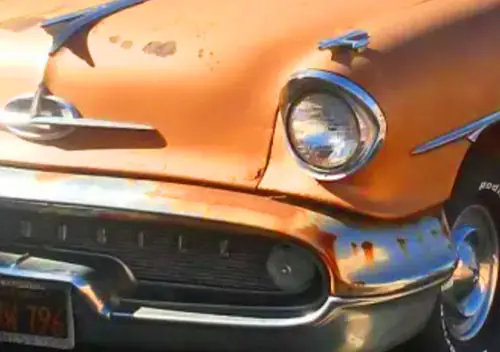
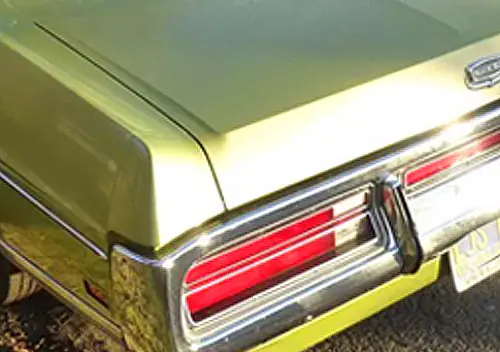


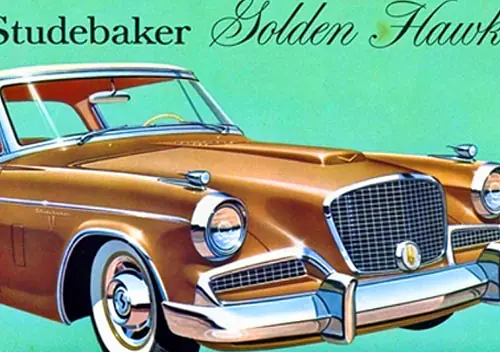
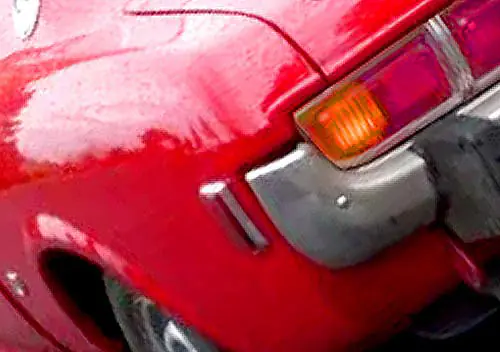

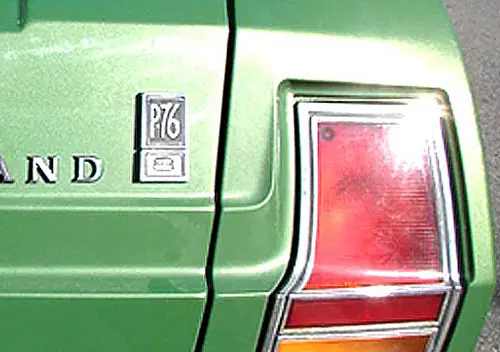
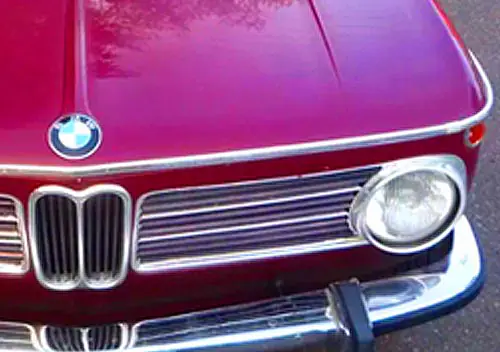
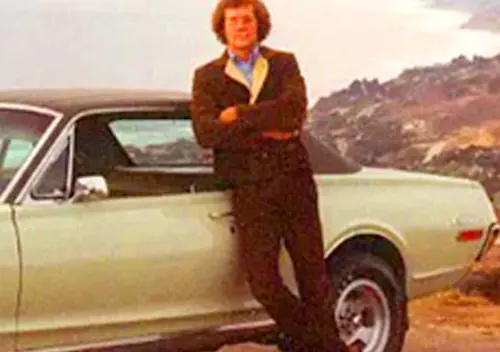


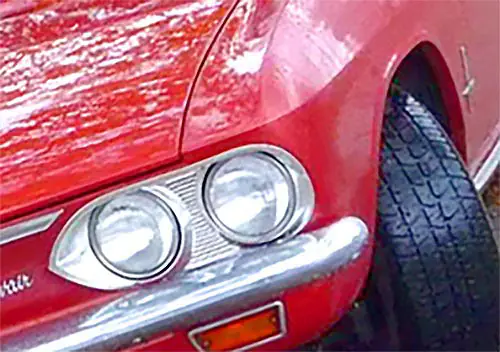


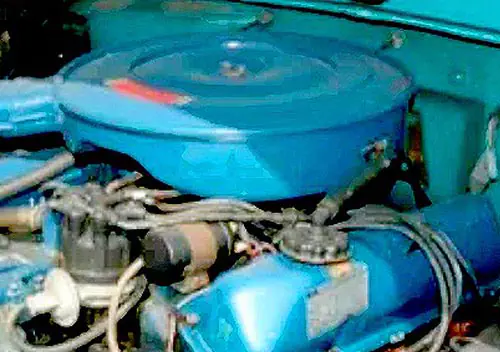



There’s a small error in Snopes’ article, which doesn’t detract from the fact that “Nova” sound perfectly well in Spanish. The original, 62-65 Chevy II was produced in Argentina under the name Chevrolet 400 until the mid-70’s. The ’68 Chevy II (the first one to be called Nova in all its series) was produced from 1969 to 1978 as “Chevy”, using even the same type as “Nova” (from about ’73 to ’77 or so there was a luxury version called “Malibu”. I don’t have a clue as the reason for the name change, but it’s not true that the same car used the same name in all of South America. I’m sure, anyway, that the reason was not the “No va” legend.
Most here have probably heard it before, but I’ll mention anyway the other neat fact about the X-car names. They had the Nova, Omega (Olds), Ventura (Pontiac), and Apollo (Buick). The first letters together spell NOVA.
Actually As I Had Mentioned Before Nova And It’s Sisters Skylark&Seville Had Done Great Here( Mainly because We Don’t Speak Spanish,Just Kidding) They are Great&Reliable Cars&I Am Very Surprised That They Didn’t Do Good Over there.I Guess Different Nations Have Different Taste In Cars.
…”terrified of visiting a therapist…terrified of visiting a therapist”…?? And then I remembered Benny Hill.
In a similar vein, Tobias Funke was the worlds first combination analyst/therapist.
https://youtu.be/UrIpPqcln6Y
After the Therapist anology, I was waiting for it. 😀 Didn’t have to scroll down too far to find it, thanks! It’ll be a cold day in hell before I make an appointment with Dr Funke, a self-proclaimed Combination Analyst and Therapist.. (Anal-rapist, as his card proclaims). Eeeeew
BTW, you’ll get used to the gas smell, and watch out for hop-ons.. you’re gonna get hop-ons
Username checks out!
I have two: First – That Studebaker used a Ford 289 V8. Wrong, Wrong, Wrong. The Studebaker 289 predated the Ford engine of similar displacement by 7 years.
Second – That Chevrolet invented PosiTraction. Wrong again. The Packard Division of Studebaker-Packard first introduced the limited slip differential in the U.S.in 1956 cars, which it called Twin Traction. This was a full year before Positraction was offered on Chevrolets.
Ditto for the Rambler 327. There are some who swear up down and sideways that AMC used a “Chevy engine” — despite the fact that the Rambler 327 debuted in 1957 and Chevy’s was issued in 1962, and they do not even superficially resemble each other.
Even further…The Nash 327 was an undersquare engine (stroke greater than the bore), a bit lower in horsepower than the later Chevy version but it had gobs of torque. A perfect engine for the fuel-economy conscious buyer. A later variant in 1964 or so was the 287 de-bored version (by a quarter-inch) which kept dealers happy when customers demanded a V8 for the mid-range Rambler Classic .
The Chevy 327 was the second over-bore of Chevy’s 265 – the first was the famous 283 – and was quite OVERsquare. A great-revving, great-breathing, horsepower-laden V8 which bore no physical or specifications resemblance whatsoever to the older Nash engine that AMC produced until 1966.
Here’s an AMC 327 (this one in a ’65 Marlin). Truly has no resemblance to a Chevy motor.
I have heard so much misinformation about AMC, up to and including that they didn’t actually build their own cars.
I overheard some motor wizards observing an AMC V8 in a Rambler & concluding that it was a Ford engine… because it was blue.
Obviously that engine in the picture is a Chevy… it’s red.
Drive me nuts when a so called “car guy” says two car brands motors are “the same”, since they got same displacement!
Examples: Mazda and Ford 2.5 L v6’s or the many 2.0 liter fours.
I recall the Ford and Mazda 2.5s ARE related designs (though hardly identical).
Ok, add this. In the late 70’s when GM downsized, My father-in-law bought a 78′ or ’79 Malibu wagon. It had the rear window defroster. One, mind you One mechanic, told him that you should NEVER use it, as it “runs the battery down” or hurts the alternator. GM if I recall, did have a problem with the rear defrosters for about a minute, but corrected it. The whole time he owned the car, about 3 years, he never used the feature despite living in east coast New Jersey. Because, one guy told him not too.
“The Big Three automakers conspired to kill the Tucker car”. Preston Tucker made enough of his own mistakes and often skirted the edge of what was legal and prudent. Also, the Big Three at the time were selling every single car they could make. The Tucker might have been a great idea but it was doomed from the start. Here’s just one article that tells the story – there are many others.
http://www.autofocus.ca/news-events/auto-retro/who-really-killed-the-tucker
Another classic is the myth of the 200 mpg carburetor that the Big Three (in collusion with Big Oil) kept under wraps.
Gasoline does not have enough potential energy in a gallon to move a car 200 miles. Gasoline has 33.41 KWH, 120.3 MJ or 114,000 BTUs per gallon.
It takes 30KWH to move a Nissan Leaf 100 miles, therefore the maximum possible efficiency for a compact car would be 111 miles, not accounting for thermal loss in the exhaust gases and other inefficiencies that I don’t have time to google. That we can get 50 mpg is darned close to what we’ll be able to get unless we go for smaller engines with turbo or supercharging, weird combustion cycles and other tricks.
A 1 ltr 3 cyl diesel with both turbo and supercharging would get the best mileage while still having enough torque to move a subcompact car. Plus, #2 has 37.95 KHW of energy in it.
You can’t use science to disuade a conspiracy believer, because if they understood science they wouldn’t believe in this krap.
Combustion engine maximum efficiency is about 40%.. An electric motor is about 90% efficient. Combustion engines are getting more efficient, but that’s a huge gap.
How efficient are the various types of electrical generating methods which will be used to charge up the electric cars?
Our choices are Hydro, Coal or Nuclear,and in some cases, Gas.
None of these are exactly cheap to implement, and some have downright fallen out of favor (Nuclear, if it ever was in favor in the first place)
Solar will only play a supplemental role. Even if a breakthrough were discovered & cells were 100 percent efficient, the solar constant is the limiting factor.
Yeah, I loved that one! Wouldn’t you think that the independents Packard, Studebaker and AMC would have jumped on that like a dog on a steak? Advertising their cars where capable of outrageous MPG, because of their “secret” mechanical patent? They’d have buried the big three. My somewhat whacko family… loved them anyway :-)… Also subscribed to that, and also believed that their was a absolute “cure” for cancer, but those “damn greedy doctors suppressed it cause they’d loose money!”
Beyond the impossibility of a magic carburetor that would make a car get 100 mpg is the ridiculous notion that the auto industry had some collusion with “big oil” that resulted in suppressing that technology. Think about how much car manufacturers spent – and still do spend – trying to eek an extra 1 or 2 mpg from their vehicles.
http://www.hotrod.com/articles/hrdp-1009-what-ever-happened-to-smokeys-hot-vapor-engine/
Automakers KNOW how to make engines get better mileage. You don’t believe they are in bed, with Big Oil? Sp, why were these designs NEVER adopted by The Big Three? This design was done, by a man that only had a 10th-Grade education.
Oh, and to further support how they are in bed with oil companies, then feel free to explain why Ford took bailout loans from the U.S. Department of Energy?
Or, maybe we can wonder why some technology, from 1984, isn’t being used on trucks and SUV gas guzzlers. Maybe, because excise taxes on gasoline are a TRILLION-dollar-per-year source of tax revenue for the federal and state governments…..
https://www.cars.com/articles/2010/12/report-ford-took-federal-funds-too/
https://taxfoundation.org/state-and-federal-treasuries-profit-more-gasoline-sales-us-oil-industry/
That the Chrysler LX/LY cars are “based on some obsolete 1990s Mercedes platform”. Yes, they initially utilized some Mercedes parts that were already in production (it was DaimlerChrysler after all), so of course a few interchange with older MB cars. But if anything, the LX/LY was developed alongside the ’03-’09 W211 E-Class and is not a reconstituted W210 or W124. In fact, the project began before the DaimlerChrysler merger.
https://www.allpar.com/history/interviews/burke-brown-lx.html
Oh, and speaking of Snopes, here’s a funny one:
http://www.snopes.com/autos/dream/57chevy.asp
The CC Effect, again: I read that yarn in The People’s Almanac when the book came out in the mid-70s, and again a few days ago when I received a perfect, three-volume set of all three books in the series.
I always thought that keeping the ’57 Chevy in production would have been a hard thing to pull off with GM’s bevy of attorneys, not to mention that the ’57 was not all that well regarded in the years immediately after 1957. At that time they were just used cars; I don’t see how it would’ve been cost effective to sell a limited-production new car at used car prices.
Here is a variation of the 57 Chevy Continuation legend:
A Turkish company bought the dies from General Motors and makes “new” 1957 Chevys.
http://glennbknight.blogspot.com/2009/07/1957-chevrolet.html
That article lost me when the writer asserts that Cadillac started the “fin war” in 1951. Hell, They were already on to a reskin of the original “fin” Cadillac by 51.
One of my older, non car guy, coworkers had a conversation with an equally non car guy, older client where he asserted that if GM could build a new ’56 Chevy, they would sell like hotcakes! Of course the old guy client agreed enthusiastically! Just another expression of old folk’s nostalgia.
If it had happened, it would *look* like a CKD/export car. Four-door post sedan only or *maybe* also a four-door wagon, plain-jane exterior, interior trimmed to appeal to sober middle-aged types somewhat upmarket than Chevy buyers at home, eventually some doing-their-best attempts at updates.
That the Austin Allegro
1 – was more aerodynamic going backwards – so was any car of the time with a front mounted radiator
2 – had windscreens and rear windows that popped out, but only if you jacked it up wrongly
3 – that the wheels dropped off, but only if you treated them as if they were the same as the ADO16, which they weren’t
But it still wasn’t a good car.
Actually, Mythbusters, debunked that first one, although they used a Porsche 928.
Oops! I thought the Allegro rear-window pop on early ones was actually true! (I should add I’ve never seen an Allegro in real life). Perhaps it’s because I remember reading a Wheels (Aus) magazine article testing a Mark 5 Cortina in about ’81, where they drove over a bump and the rear window simply fell out.
The Aussie Cortina wasnt very good it only resembled the car every other market got which were ok.
That must be round about right, because the cars I drove and passengered were pretty horrid, though most were the stupidly overburdened 4.1 litre straight 6 ones. They made a lead-topped arrow seem athletic, and a jet engine quiet. They had the added joy of late-’70’s English electrics and fittings; all up, a loud, poor-handling, good-looking, unreliable pile. Kind of a Jag for the poor, maybe?
Cars being run backwards reportedly being more Aerodynamic was part of the development of the Chrysler Airflow.
My best myth is “Premium Gas is better for your car.”, Yeah,it usually isn’t – unless you own a gas station!
PS; When I was a ‘kid” in the late 70s, I pumped gas (yes, that was a “thing”, LOL!) at an “independent” (not gonna name it, It’s long gone.) station. We sold 3 grades of gas: Regular,Regular Premium and Unleaded. Amazing feat for a place with 2 underground tanks!??
Did the gas station have pumps capable of mixing regular and premium to get the middle grade? Sunoco used to sell multiple grades of gasoline by mixing regular and premium at the pump to get the desired octane.
No, It was an independent station, (not Sunoco or any other known branded station) We sold whatever the owner bought from whatever supplier he got a “deal” ftom. The pumps were of the 1950s type, no “Sun Dial” or other mixing type. Just a simple case of the two Unleaded types coming from the same tank, The other tank was regular (ethyl leaded). I used to take the measure of the tanks using a wooden pole (about 8′ long, So I clearly remember there being only 2!)
PS, In my original post, I implied we had 2 “grades’ of regular gas, The line up actually was: Regular (Ethyl leaded) Regular Unleaded, Premium Unleaded. But only had 2 tanks: Regular (leaded) and Unleaded.
Mid-grade is a mix from the regular and premium tanks, that is pretty standard everywhere.
Here we have 3 grades of gasoline with various octane ratings. Some are pure gasoline with regular 85 octane (we are high altitude), mid grade that is 87 or 88 octane with ethanol, and 91 octane. The mid grade is usually ethanol, while some regular is ethanol and may be either 85 or 87 octane. The premium is 91 octane and may be pure gasoline or ethanol. I usually mix the pure 85 with pure 91 to get 87.5 or so.
Where do you you live?
About 3000 feet or so above sea level near the Homestake gold mine (now a neutrino catcher). Mt Rushmore is also near.
Washington, right? Is pure gas typically available there? I noticed driving through Oklahoma that they had pure gas available alongside e90. I’ve not seen that before and definitely never seen it where I live in Texas.
South Dakota I meant:)
I think here that the Exxon stations are all ethanol, but I have not bought gas there for some time, so I am not sure. Mobil and Exxon are the same company at the corporate level. Conoco and Phillips 66 are also the same company. Mobil pulled out of here some time ago, but now are back, but BP left. Some of the BP station went to Mobil and some are Phillips 66.
I usually buy from a Phillips 66 that was BP and it sells 85 and 91 octane pure gasoline and a 10% ethanol mid grade 87 octane. If I want ethanol I go to a Mobil station that has 87 and 88 octane Regular and mid grade that are both ethanol, but the premium 91 octane is pure gasoline. We also have Sinclair but I am not sure what they have. Since oil prices dropped there seems to be more pure gasoline but I am not sure of that. The ethanol is cheaper.
I think that my CTS got about 1 MPG less on ethanol but I am not sure.
I remember reading in a history of Rolls Royce that the Silver Mist model sold poorly in German speaking markets because mist translates as manure. Can anybody confirm or deny this?
You remind me of the other Rolls Royce urban legend: That the Rolls Royce [insert model here] came from the factory with a sealed hood/bonnet.
No. They. Didn’t.
Yes. They did. English build quality meets hood catch.[Insert fingers here to prise recalcitrant hood].
Some RR had Yale locks on the bonnet. I would speculate that it was just to keep out the riffraff looking for a battery or something.
It always puzzled me why hoods didn’t lock (on cars without inside hood release). My battery, Spark plug wires and distributer cap was usually worth more than the crap in my trunk! ?
The successor model to the Silver Cloud in the 1960s was to be named the Silver Mist, until the German translation was brought up.
The car was named the Silver Shadow, and no Silver Mist had ever been released – a fact that you could find easily if you bothered to search at all.
What we really want to know is how well the Buick LaCrosse sells in Quebec.
Doesn’t LaCrosse in Quebecois have something do with pleasuring yourself?
I think it has more to do with in Quebec with those railroad gate guards. “You must not LaCrosse the tracks when the gates go down! It means a LaTrain is coming!”
Likewise the Mitsubishi Pajero in Latin American countries, or so the legend goes.
That is not a myth. Those Mitsubishi are sold as Montero in many markets, like Chile.
We had a lot of jokes in the office about the Mitsumishi W when someone confirmed that Pajero translates to English as W… (you can fill the blanks yourself)
It is good think they used the Montero name in Spanish speaking countries.
However as Mitsubishi sold it in Brazil as Pajero, there were cars enough from tourists to make the joke in Argentina and Uruguay.
Although it’s not a myth, it’s funny anyway – When Ford do Brasil released the Willys project made with Renault, Ford’s president wanted it was called Ford Pinto, however Pinto in Brazil is cock, and not that found in the farmers…
So a car reporter suggested the name Corcel, which means in some ways Mustang in portuguese.
That the Mercedes-Benz 300 SL was the first production car with a fuel-injected engine.
Both the Goliath GP700 and Gutbrod Superior were available with fuel injection from 1952.
https://www.curbsideclassic.com/blog/cohort-sighting-1951-goliath-gp-700-rometsch-looks-like-a-porsche-but-this-fwd-coupe-pioneered-fuel-injection/
A zillion things about the Ford Pinto case–where to begin? http://www.pointoflaw.com/articles/The_Myth_of_the_Ford_Pinto_Case.pdf
As the one-time owner of a ’77 Pinto hatchback, equipped with the gas-tank protection package, I found this interesting.
Note that on page 1033 of the Rutger’s Law Review article posted here, the author seems to contradict himself when he states “a limited core of the firetrap myth seems fair enough: the Pinto’s record in rear end fire fatalities was not only much worse than the all-car average but was apparently somewhat worse than the record of most (if not all) of it’s competitors.”
Happy Motoring, Mark
Oh, and this one:
Or that all Model Ts were black. No, No, No.
Yeppers! Prior to 1914, Model Ts were all kinds of colors. I also believe that was the case from 1924 on.
Not sure about 1924, but definitely by ’26.
Perhaps it’s not as common today, but the belief that it’s safer not to wear a seatbelt because “I’ll be thrown clear in a crash” is a myth I’d like to see vanish. Designers and engineers have expended a ton of effort so those seatbelts and airbags and crumple zones help keep you safe; take advantage of it.
True about seat belts. Back when it wasn’t “cool” to use them, my argument FOR using them was: Race car drivers use seat belts, Why wouldn’t I? OTOH, it took me a long time to get used to airbags. I’m still not “crazy” about driving with a “bomb” in my face. What if a glitch sets that thing off for no reason…….Best not to think about it!
Note that I am an avid seatbelt wearer, but I also have a tendency to be the contrarian as well, so my response to: “Race car drivers wear seatbelts, why wouldn’t I?” would be, well race car drivers don’t fiddle with the radio or dick around on the phone when wearing them either. 🙂
I hear ya, OTOH, I never fiddle with the radio in the car as I have 730 mp3s in “shuffle” anyhow! ?
I have no beef with seat belts, but airbags are something I neither want nor need in any automobile I own. Airbags should be *optional* on motor cars. If a buyer wants them — fine. I don’t like airbags being mandatory on all U.S. vehicles. No thank you.
I have lap belts in the front seat of my ’64 Falcon. That’s it for ‘modern safety features’. I *think* shoulder belts were mandatory on U.S. cars starting with the 1968 model year if I’m not mistaken. I owned a 1967 Lincoln Continental that didn’t have them; just lap belts. Shoulder belts were optional and I could see where they would have been installed had the Lincoln’s 1st owner desired them.
My ’72 Buick Skylark only had lap belts in the front.
It had to have have front outboard shoulder harnesses as they were mandatory after January 1, 1968 per Federal Motor Vehicle Safety Standard 208.
My last car without an airbag was an 89 Cadillac Brougham (Made until 92 without one!) It was the last time I felt like I wasn’t gonna get killed by my own steering wheel!, Weird as my first car was a 50 Buick Super, whose column, being non collapsible (natch) woulda impaled my (non belted) innards. Still, It should be an option. I seriously hate having a “claymore mine” in my face while driving.?
Henry Ford did NOT invent the assembly line, contrary to popular opinion.
Along those lines: Thomas Edison DIDN’T invent the incandescent electric light and Apple was NOT the first personal computer. But people STILL believe this BS.
An oldie–the (1930s) Pogue carburetor, “revived” in the 1970s:
The current myth is that nitrogen filled tires leak slower, resist overinflation from frictional heating and that they help you get better mileage. Not a bad trick since ordinary air has just over 78% nitrogen already. Oh, the other tale is that the moisture in ordinary air will make your TPS sensors rust and fail. And supposedly helps keep the tire from rotting on the inside. You know, if my TPS sensors suck that badly, I’ll ignore them and check my pressure like I do anyhow.
IKR??
I read all the good, the bad and the ugly about nitrogen 4 years ago before I bought a new car. I decide to try it. For $35 out the door (with free top offs) I figured it was worth a try. I can honestly say it’s definitely worth it. I’ve had to have them topped off twice in 4 years and never more than 3 pounds were added each time. With the wild fluctuations in temperatures we have in northern Ohio, I’ve never seen more than a 5 or 6 pound difference between hot and cold temperatures. Try that with just air. Besides that, there’s a reason why they use it in tires on race cars and airplanes !!!!! See attached photo of my “not a race car” 2014 Chevy Cruze 2LT with a 6 speed manual transmission. P.S. I’m 65 years old and as long as I’m alive, the manual transmission will not die.
No, you really can’t honestly say it’s definitely worth it—not with any veracity, not til you put purest special $35 nitrogen in the tires on one side of the car and terrible, horrible, no-good, very-bad, dirty, plain old regular old boring old normal old air in the tires on the other side of the car and keep careful records of the (non-)difference in pressure variation and loss vs. temperature and time between the two sides.
100% Nitrogen really is better.
{{reliable citation required}}
Here’s a good one: https://www.tirerack.com/tires/tiretech/techpage.jsp?gclid=CjwKCAjww9_MBRAWEiwAlaMJZqDfNZw50Lx6Mzr1WTR0tGKvSgJ5eLU71fBl4W9eqJ3E6MTY9e0AGhoCWc8QAvD_BwE&techid=191&s_kwcid=AL!3756!3!200245277272!e!!!!nitrogen%20in%20tires&ef_id=VVozrgAABe-0Qjx@:20170819194652:s
I’m sure there are others. The facts are obvious: nitrogen permeates rubber at 1/3 the speed of air, hence pressure holds longer. There are other advantages too, but that one alone is considerable, given how lax folks are about checking their tire pressure.
Wait a sec, hold on. The linked piece doesn’t say nitrogen permeates rubber at 1/3 the speed of air. It says, “Nitrogen reduces the loss of tire pressure due to permeation through rubber over time by about 1/3.” So roughly 30% slower air loss. Which means if your tires lose a pound of air in 60 days’ time, they’ll lose a pound of nitrogen in about 85 days’ time. I agree with you that Americans tend to neglect basic car maintenance, so I doubt people who won’t check their tire pressure every 2 months are going to check it every 3.
That linked article concludes (emphasis added):
Actually Consumers reports did the experiment with the result being that air filled tires dropped about 3.5 PSI and nitrogen filled tires 2.2 PSI.
Yes, 3.5 versus 2.2…over a year’s time. The relevant portion of the CR article:
Ok; so I got that number wrong. But it still doesn’t negate the fact that nitrogen really is better than just air. Maybe just not very much.
I wouldn’t pay any money for nitrogen, but if I had two pumps at my disposal, one air and one nitrogen, guess which one I’d use?
Nitrogen is also claimed to reduce or eliminate moisture buildup in the tire, eliminating rust out of steel wheels. I once got a flat in a 15 year old travel travel trailer, it was because the wheel rusted out from the inside from moisture build up.
Rv’s tend to sit a longtime between uses, nitrogen would probably be a good idea in trailers and motorhomes to help prevent wheel damage and flats.
Moisture does not really build up in the tires but if you fill the tires in warmer weather when the dew point is say 50 degrees F, then the air compressor will pump that air into the tires so the tires will have a 50 degree dew point. Then in winter, when the temperature drops below 50 degrees, the moisture will condense to water inside the tire. With water and oxygen inside the tire corrosion can start.
I tell my friends that I use a “special nitrogen-oxygen blend”in my tires. I say that it’s 78 percent nitrogen, 20 percent oxygen and has a two percent mix of special trace gases for reasons only scientists understand.
If I can keep a straight face 90 percent of people fall for it.
Ha! That’s a good one.
In a similar vein, I convinced a (person younger than me) that I had invented a new, ad supported streaming music,news and information service that only required a one time hardware purchase. – They asked me what I’d call this new tech…..I called it.., Radio!
In the same vein…
http://www.dhmo.org/facts.html
I’ve always felt if you are going to play that game with chemically naming water, it should be called Hydrogen Hydroxide… think about it: PH is a neutral 7, making it an acid (H)-something, and a base (caustic) something OH (hydroxide).
H2O breaks down to H-OH (hydrogen hydroxide) not Di-Hydrogen Oxide, as would be implied by H2O.
But either way, it’s still fun to mess with someone who’s forgotten everything they learned in science class. Hell, I might be ‘all wet’ here, and yes, the pun was intended, because high scool chemistry was just about 40 years ago now for me. ?
There is a parody page on Facebook devoted to the perils of DiHydrogen Monoxide.
Oh, but it is called Hydrogen Hydroxide (or HHO, or “Brown’s Gas”) by the con artists selling “HHO generators” fraudulently claimed to magically boost fuel economy and power using nothing but water, handwaving, electricity (which is free! The battery’s always full of it, and the alternator just sits there making more than it knows what to do with whenever the engine’s running!), and handwaving.
Twofer: toilet paper oil “filters”.
Threefer: Scamsoil products and the pyramid-scheme “dealer” network they’re sold through.
Fourfer: K&N air “filters” (thoroughly debunked here and here within ready reach, and many other times besides).
I Just reread your post,and yeah! your right!?
I like!
If there is an advantage to nitrogen it would be that the oxygen in air will probably combine with the rubber in the tires, which is not good, but occurs slowly. Also the nitrogen generators get rid of all other gases, water in particular, which helps too. So the rate of nitrogen loss being 1/3 that of air probably has more to do with the oxygen combining with the rubber. Moisture in the tire can condense in cold weather, which then lowers the pressure a lot.
Following up: Nitrogen molecules are bigger than Oxygen by a small amount, with water even smaller – 300 vs 292 vs 285 units.
“Driving without shoes is against the law.”
I don’t know about the rest of the world, but this has been thoroughly researched by AAA, and barefoot driving of a car (motorcycles are a different story) is 100% legal in all 50 United States, the District of Columbia, territories, possessions…the works, period. I can link to sources, if necessary.
This same statement resulted in some rather odd comments on TTAC a few years ago; people insisted that it’s illegal, unsafe, stupid, or just plain wrong. I’m pretty passionate about this; I don’t understand why shoeless or barefoot driving rubs some people the wrong way. I drive in my stocking feet sometimes, and know I have a better tactile relationship with the pedals.
Methinks it was either illegal at some point in the distant past, or someone’s parents made up this “law” to keep their kids in line!
It is illegal in Spain, I was born there and I still read automotive news from the old country and yes you can get a ticket for driving without shoes. You can’t also drive with your elbow out of the window.
No elbow out of the window? Then I assume the Opel Manta was a slow-seller in Spain.
Alright, I laughed.
+1
This. I love barefoot driving, especially this time a year. I long thought it was illegal and did it anyway until I confirmed it was in fact perfectly legal. In contrast i’ve had near accidents due to wearing heavy work boots, the large sole would occasionally get caught under the brake pedal while using the accelerator.
in Brazil it is legal. I do it a lot, mostly on weekends when usuallly I wear slippers (current car: Renault Logan with 5 speed manual). Here 99% of highway truckers drive barefoot too. Usually they only wear slippers.
Not quite. Barefoot driving is allowed in Brazil. But open-heeled shoes (flip-flops, sandals etc) are forbidden and subject to heavy fine. If caught wearing such apparel your car will be retained until you change into the correct outfit.
If barefoot driving is allowed, wouldn’t changing into the correct outfit simply be removing your sandals?
That rule I agree with btw. Driving with flip flops does not work, I drive barefoot in the summer specifically because I often wear flip flops, they get thrown in the back seat before I set off.
XR7Matt, That’s what I meant, I do just the same as you.
Driving wearing flip flops is way dangerous, not comfortable and ilegal here. But as I was saying, driving barefoot is legal indeed.
The myth about not buying a car made on a Monday or Friday, because the assembly workers are distracted or impaired on those days. I still hear about this one. Some people use it as a funny cliche, but others take it seriously.
Obviously cars are very complex with many subassemblies that can be made anytime. Also many car plants operate 7 days a week with multiple shifts. So there’s no relevance for yhe day of the week it rolls off the line.
This is one of those things that I believe at a time could have been some truth to. When people say it now it just sounds anachronistic, since so much of the process that actually affects quality is automated now
This was not a myth in the 1970’s at the U.S. “Big Three” automakers.
Here is an except that explains the situation
GM absenteeism jumped from 2% in 1960 to 6% in 1970 (‘GM:The Price of Being Responsible’, Fortune, January 1972). It rose another 11%, in 5 months, in early 1972. According to Malcolm L. Denise, Vice President of Labour Relations at Ford Motor Company, the rate of absenteeism for hourly-rated workers at Ford in the USA ‘more than doubled’ between 1960 and 1968. Every day at GM 5% of workers are absent ‘with no explanation whatsoever’ – On Mondays and Fridays the percentage doubles, 10% are out (Fortune, June, 1970). The Wall Street Journal of September 29, 1970 quoted a GM statement: ‘many workers who become ill in midweek don’t come back to work till the following Monday. Now it’s just not normal that everybody should recover the same day!’ At Chrysler absenteeism has reached 18.6%. During the summer months, at Lordstown, it had reached as high as 20%. When a worker at Lords town was asked ‘What is it like on a Monday, in summer, then?’, he replied, ‘I don’t know, I’ve never been in for one’. (Sunday Telegraph, December 2, 1973) Another worker, when asked ‘how come you’re only working four days a week?’ replied, ‘because I can’t make enough money in three’. (Newsweek February 7, 1973)
Absenteeism has important effects on production. A local Lordstown official put it this way: ‘When absenteeism gets really high, they go on general break and bring in the relief men. If that’s not enough they pull in everybody they can get–cleaners, drivers, maintenance men, anybody. They’re supposed to have 3 days’ training, but they just shove them in as welders, though they may never have held a gun before in their lives. Then, of course, the vehicle is garbage.’ This kind of thing can happen ‘a couple of times a week or more’. (Sunday Telegraph, December 2,1973)
https://libcom.org/library/lordstown-struggle-ken-weller
Considering this week I dealt with a 2016 Moto Guzzi that had both oil pickups left out of the engine from factory, I’d say it’s still relevant, at least among Italian motorcycle brands…
“Corvairs are unsafe.”
After Ralph Nader published Unsafe at any Speed and testified before Congress, the Corvair was thoroughly studied by the Federal government and found to be no less safe than other compact cars produced at the same time.
Because of this, the Corvair is technically the only car to actually be certified by the Federal government as being safe!
This from a guy who didn’t himself have a driver’s licence!
Ralph Nader had a driver’s licence. He wrote an anecdote that an old man walked in front of his Studebaker while he was driving across his university campus in the early’50’s. He jammed on the brakes so hard he popped a wheel cylinder (maybe his brakes needed adjustment) , but he avoided hitting the man….. who turned out to be Albert Einstein.
He never discussed his driving publically once he became well-known because he didn’t want his choice of car to become an endorsement.
Ah, I’m sure had he hit him he’d have an excerpt in his book blaming the car and by extension the automakers for running down the greatest mind of the 20th century, rather than his own clear lack of attentiveness behind the wheel.
There are some clouds over that study. As in, it was funded and instigated by an outside source (guess who?). I’ve read some good debunking o their methodology.
The simple truth was that the Corvair really could be relatively more dangerous in the hands of drivers not accustomed to the oversteer of a rear engine car, meaning most Amercans at the time. And the Corvair’s issues were greatly exacerbated by not adhering to its extreme front/rear inflation bias (15/26).
You know, there really was a reason GM introduced various fixes to the Corvair, including shock rebound limiters (1962, to minimize tuck-under, and an anti-sway bar, and then a camber-compensating spring in 1964. And then a fully-articulating rear suspension n 1965. This was all before Nader’s book came out in 1965. GM had to settle lots of expensive law suits, and the bad PR/rep the Corvair was developing about its snap oversteer was becoming a real problem.
By the time Nader’s book came out, it was already over for the Corvair. So the real myth to be busted here is that “Nader killed the Corvair’. Not.
The Renault dauphine is considered a extremely slow car in the USA, but strangely in France and Spain got a reputation as a dangerous car for the same reasons as the corvair. In Spain it was called the window maker.
I know roads were dangerous in the 50s and 60s in Spain, with trees along the road, but I don’t think it was a fast car at all.
It doesn’t have much to do with speed. One can experience snap oversteer and flipping at 35 mph or less.
Triumph Heralds have shocking wheel tuck under when cornering hard and they sure arent fast,
Military M151 trucks were supposed to be ready to flip around 15mph.
As a Corvair owner who goes to car shows once in a while, it makes the hair on the back of my neck stand up when I hear comments about Nader killing the Corvair.
And Paul your comment about the average driver not being accustomed to the handling of Corvairs is true. For some reason I can’t find it on the ‘net, but an automotive writer for Haggerty Insurance’s car magazine and race car driver who was born about 1970 was able to borrow a really nicely preserved original, completely stock 1960 Corvair sometime within the last year. With the car checked over thoroughly and a new set of Coker period correct bias ply tires, he proceeded to run the Corvair hard at an old airport. He spun it and did all kinds of other high speed handling . Never flipped it. His comment was that he had driven race cars with wicked snap oversteer. The Corvair did none of that.
His conclusion was that it does handle differently from a conventional American car to an American driver, but he found it to be safe, quite fun to drive and he decided to start looking for one!
The name of the article was “Will a Corvair kill you?”
Bob
Sorry, but that doesn’t prove anything. I’ve watched way too many hours of GM’s own films flipping Corvairs to know that under the right circumstances snap oversteer does happen. But a good driver can avoid it.
Anyway, trying to replicate on a track by an experienced driver exactly what Mom did on the way home from visiting her sister in the next town when she flipped her Corvair is a futile exercise.
The simple fact is that the Corvair was prone to that, and did it, all too often. And I say that as a die hard Corvair lover and former ’62 Monza driver.
I think the point was that with someone with experience the ‘Vair was no problem. To a novice, not so much. Even Porsche was struggling with drivers (mainly celebraties) crashing rear engine cars and complaining. If you have driven rear engine cars and know how they handle you will do well.
Please read the article when you can Paul. And form you opinion from there. You may still be right. 🙂
Paul has already researched the Corvair, and written about the problem in
https://www.curbsideclassic.com/automotive-histories/automotive-history-1960-1963chevrolet-corvair-gms-deadliest-sin/
Here’s an extract
By 1963, sports car racer and writer Denise McCluggage could begin an article on Corvair handling idiosyncrasies with words that assumed a knowing familiarity by her auto buff readers: “Seen any Corvairs lately with the back end smashed in? Chances are they weren’t run into, but rather ran into something while going backwards. And not in reverse gear, either.”
…Then Miss McCluggage went on to describe a phenomenon she termed a “sashay through the boonies, back-end first.” “The classic Corvair accident is a quick spin in a turn and swoosh! — off the road backwards. Or, perhaps, if half- corrective measures are applied, the backward motion is arrested, the tires claw at the pavement and the car is sent darting across the road to the other side. In this case there might be some front end damage instead.”
Popular entertainer Ernie Kovacs was killed in his 1961 Corvair Lakewood wagon (which had an even more exaggerated rear-weight bias) when he lost control on a rainy evening in Los Angeles (picture at top of article). Note the right rear tire that is off the rim; it’s possible that happened from the curb, but it is typical of numerous similar incidents where the rear tire rolled off the rim during an emergency maneuver and caused the Corvair to be essentially uncontrollable.
Corvair engineers knew about this problem and considered raising the recommended rear tire pressures. Once again, however, they succumbed to the great imperative-a soft ride. Rubly recounts it plainly enough: “The twenty-eight psi would reduce the rear-tire deflection enough but we did not feel that we should compromise ride and add harshness because under hot conditions tire pressures will increase three to four psi.”
Even if the recommended inflation numbers had been increased with a similar differential, say 19/28, there was still another huge obstacle: essentially no one in America was used to the concept of a differential tire pressure. When I was a gasoline station attendant in 1968-1970, we inflated all car tires to 24-26 lbs, unless told otherwise. Which we never were, except the occasional sports car fanatic who knew and cared about such things.
I believe Ernie Kovacs had just left a party that night and was a lil’ tipsy and a lil’ tired when the accident happened so his senses were not at full capacity. He was 42.
The History Channel just had a show called the History of Cars. In it they attributed the demise of the Corvair to Ralph Nader.
That’s why I don’t watch tv. Especially car shows.
I find that I can’t watch any computer or law related shows because of this- just get too upset at all the absolute wrong. “You can’t object to that,” “there’s no way you could get the IP address that way,” etc etc.
I don’t really watch a whole lot of TV anyway. Pretty much Rick and Morty and hockey or basketball for the most part.
Ah, TV crime/law shows (where everyone learns about police work ,law and forensic science!) Also where new technology exists like “zoom and inhance” where a black and white betamax tape from a camera in Brooklyn can clearly record a license plate number in Hoboken! Or non existent things like “Glock revolvers” can be discussed!
TV car shows are the worst. Historic pieces are always horribly misinformed, reviews are either nonsense “POWER!!!!” or dull ” this car has the cargo capacity of 75 cubic feet, pulls 28G on the skidpad slalom test with acceleration from 0-38mph in 1.375645 seconds”, and “reality” is more about staged hijinks featuring some build for some corporate marketing crap.
I did like Top Gear admittedly, but only because there was a clear tongue and cheek suspension of credibility that made it fun and watchable. I enjoyed that show from the same side of my brain that enjoys car chases in movies – I know jumping a bridge in a getaway will total the car on landing in real life, if not cripple the protagonist for the remainder of the film, but that suspension of disbelief is the entertainment, I love all those old 70s carsploitation movies. I say this as a died in the wool enthusiast but cars as objects just aren’t interesting enough to fill up a half hour or hour per week.
Oh, The History Channel! If purveyors of ancient aliens reality show pawn shops say so it must be fact!
Oh yeah, The start of the “Mommy State”. OH,MY!!! Rear engine cars handle differently than front engine cars! HELP ME MOMMY! Coffee is hot! Pop has sugar! Burning s%*^ makes smoke! Cripes! Cars are as dangerous or not as (and I hate to bring this up, because,Politics) guns.
Can I kill myself with a 1962 Corvair? – Yes
Can I kill myself with a 1968 Corvair? – Yes
Can I kill myself with a Colt M1911? – Yes
Can I kill myself with a Smith & Wesson Model 19? – Yes
Can I kill myself with a Hamilton Beach Blender? – Yes
Can I kill Myself with a Westinghouse Toaster? – Yes
Well now one can see how DANGEROUS having blenders and toasters can be! DO NOT ENTER THE KITCHEN!
You’ve shown absolutely nothing except your own very limited ability to grasp the concept of risk, and that some things really are relatively more risky than others.
I’d still like a Corvair as my hobby car. There’s enough aftermarket support to keep it running and replace the rusted bits and restore to a nice looking car level. I just wouldn’t go autocrossing with it. That’s what Ghias are for 🙂
There’s a reason that US automakers always took a conservative approach to car design before the Corvair. An understeering, slow steering response car is much more stable and easy to control than an twitchy auto cross type car. It will scrub off speed as it slows instead of whipping the rear end around. Not to say that it is better at avoiding sudden obstacles. I guess Detroit knew that the average driver would just lock up the brakes and skid, so the car might as well skid in a straight line.
For the most part, original spec, vintage cars don’t drive nearly as well, or as safely, as the average low spec modern car.
Of course somethings are more risky than others, That in and of itself doesn’t mean that they are abnormally dangerous. People don’t actually rate how dangerous something is based on actual reality. Due to media,for example people think (to this day) that New York City is “dangerous”…In reality it is actually no more “dangerous” than Pittsburgh, (in certain years it’s been less so!) OTOH, People fail to accurately see real danger. Taking a shower is more hazardous than a flight on a 737. More people die from falling down stairs than die of gunshots, But that doesn’t “play” well on TV. Is a 1st Generation Corvair safe? Yes, as about as safe a a 1960 RE swing axle car was! If driven properly. Alot people had to get used to FWD too.
As usual, the comments are as entertaining as the article. These are all great, and very valid. For my two cents worth, what grinds my gears are the knuckleheads who think that the highest digit on a classic car’s speedometer (analog, IE needle type) was as fast as the car in question could ever go, and/or was a “guarantee” that the car could go that fast. How mindless, unthinking, inexperienced and gullible do you have to be to believe such a thing??? While all of the sleds I’ve had would bury (and a couple have “broken” the needle), there are cars that can’t even hit the top speed displayed on the speedo. Not to mention the usual inherent speedo errors, and often-significant errors caused by changing the tire size (as we all know, larger-diameter tires than original make the speedo read slower than your actual speed, smaller-diameter tires make it read faster). Not too mention any owner-installed drivetrain modifications. Dopes who think the speedometer is the last word on a car’s top speed are dumb as a rock. End of rant. Now get off my lawn!
LOL. Who in their right mind would think that my 79 Buick Century Turbo Coupe (with a 3.08 gears) would only go 85 MPH. I also heard a guy tell his buddies that my car was Buick’s version of the Citation. I’m guessing his parents were brother & sister !!!!!
Back when my ’78 302 powered Fairmont was dead stock it would bury the speedo even with its anemic 134 horsepower and 2.48 gears!
Very nice Century Turbo Coupe! While I love the fastbacks of the 30s, 40s and 50s, the run of the mill ’79-’80 GM “civilian” slopebacks never did much for me. BUT the Century Turbo Coupe Aerobacks are great-looking cars. That body style is “meh” on a stripper or brougham, but really looks great as a performance coupe. They look best in that color too, IMO. Beautiful car.
The spoiler on the rear does help it look better from some angles. Thanks for your interest. When I’m at car shows or cruise ins, a lot of people show no interest in it. I’m a car guy & love a lot of cars but I’m drawn to the cars that you don’t see all the time.
This is the worst picture I have of the rear of the Century. They could of done more to improve the look of it from that angle.
Yep, Anyone who confuses a ’79 Century with an Citation (or even an FWD X body Skylark.) is either inbred,on drugs or just not a “car guy”!. But then there’s “flat Earthers” and people who say “we didn’t go to the Moon” too. Either way, Nice Ride!!???
On that point, here’s a myth perpetuated by the manufacturer — in this case, Toyota, altho it likely applies to them all —
As a kid, my eyes popped out when I saw a ’63 Sting Ray with a 160 mph speedometer.
45 years later, a 2009 Camry 6-cyl. shows up with …… you guessed it …… a 160 mph speedometer. False advertising!
The Camry could much faster if it didn’t have a speed limiter. The Camry had 268 horsepower.
The speedometer on my 1964 Falcon goes up to 120 mph. The car itself only goes up to 65 mph before it gets . . . angry. It contains a ‘170’ CID engine with a 2-speed Ford-O-Matic. → I’m guessing there’s some engine/transmission combo one could have purchased for a ’64 Falcon that could get the car to hit 120, but I don’t know which?
This is the speedometer from a VW Gol 1.6 sold here in Brazil. It marks till 260 km/h (160 mph) but this car barely reaches 190 km/h (120 mph). Probably is the most optimistic speedometer I ever see
How about 140mph/220kph in a…motorhome! Six tons, 130hp.
THANK YOU! I’m from Chile, and the Nova myth was the thing that came to me at once as I read the title of the article, before seeing the picture!
I don’t know if it is a myth, but I’ve always thought it didn’t make sense to believe bigger cars are necessarily safer. Are they?
It’s not as simple as that. Certainly not necessarily so. Safety comes about from many characteristics. It’s impossible to reduce it to that degree of simplicity.
I’m thinking in the age before safety standards there was some degree of truth to it, there were a lot more variables though because engineering and construction for any given car could vary so much between makers, but as a generality I’d wager the aftermath of an Electra 225 vs a Beetle would favor the Buick. Now a days not so much, but then again modern cars also have a great deal more mass than they used to too, so…
Well, I’d rather have a wreck under the same circumstances in an Impala than in a Mitsubishi Mirage.
People seem to assume that all car crashes happen in the same way, but certain cars might do better in a rollover, others in a head-on, etc.
A smaller car could be more rigid, less likely to roll over, carries less momentum and might allow the driver to evade the collision in the first place.
I laughed when visiting a friend in Minnesota who loaned me a Mini Cooper S, then when was finished using it for work, offered me his Avalanche “because you have your kid with you and it will be safer”. The Avalanche was a rustbucket, the suspension creaked and rattled, the ABS light was on and the brakes were doing something weird (can’t quite remember what). On top of all that, a blowout over a year previously had caused damage to the fuel tank meaning if it was filled over halfway, fuel spilled everwhere. To fill it, you had to reach around inside the wheelarch for the makeshift pipe rattling around in there. The Mini had no faults at all, but to him the Avalanche was the safe option.
More on AMCs. The 390 was NOT a Ford, the 360 was NOT a Mopar and the 327 was NOT a Chevy.
…and the 401 was not a Buick.
They used to say that the batwing fins on a 59 Chevy lift the rear of the car like airplane wings at high speeds reducing traction. Yeah, right.
The way I heard it as a kid was a ’59 Chevy state patrol car in hot pursuit on the Ohio Turnpike lifted its rear end and crashed, killing the driver.
Oddly, Snopes doesn’t seem to have anything about the ’59 bat wings, but some Googling turned up this Motor Trend page. They got some time on GM’s giant wind tunnel and disproved the lift theory once and for all. There’s a good video on that page.
The batwing myth must have been widespread — I recall that one from the ’60’s too; and Mike PDX listed it below, as well.
Maybe if the car went into a spin at 100+ MPH the fins look like they would generate some lift as the car headed backwards at a high speed.
All great reading on a lazy Friday afternoon .
-Nate
To get off subject briefly, the 80s “Coke Adds Life!” Ad slogan was translated in Chinese as “Coke Brings Your Dead Relatives Back From the Grave;” a Swedish vacuum cleaner ad hype translated to English as “Electrolux really sucks!”
Corvette bodies will crack in cold weather.
When lifting a vette on a hoist, you have to leave the doors open, unknown reason.
Citroen, in Dutch, translates to “lemon”, and that hurt sales. Yea or may?
Citroen was the name of the originally Dutch family. Translated that’s a lemon for sure, but like many other last names they can be traced back to a profession or line of business. Just like Smith. Or Carpenter.
Once in France it became Citroën. So the name got more cachet, you know…
IIRC, the Citroën family came from Poland. One antecessor sold tropical fruit and was named “Limoenmann” in yidish. The grandfather of André Citroën entered the jewelry busines, moved to Amsterdam and changed his name to the Dutch “Citroen”. The diaeresis was provided by a teacher of André, to avoid the “an” sounding of “en” in French.
André Citroën’s great-grandfather, Roelof, was Dutch-Jewish. He got the name Limoenman in 1811, at the introduction of the vital records.
Roelof’s son Barend changed the last name into Citroen (Dutch for lemon). At least, his father in law thought that was a good idea.
Barend’s son Levie married a Polish-Jewish wife, and the couple moved from Amsterdam to Paris in 1873. André was born in 1878. And the rest in history.
That’s how I’ve learned/read it.
Your username checks out. I believe it!
Can’t believe nobody has mentioned that;
“You can get a ticket for driving with the dome light on”
I was recently enlightened that that is not the truth. It was was common knowledge among my peers, however.
That sounds like something a mother would tell her kids to keep them from turning the dome lights on at night.
That makes sense for the parents of a new young driver. Why do you turn on the dome light at night? To read or look for something in the car. Distracted driving is dangerous day or night but probably a little worse at night.
Nowadays everyone’s texting all the time. Where will it end? I guess that’s why those people want a self driving car.
I had heard a conspiracy theory that the US Army, at the behest of the Big 3, dumped thousands of Jeeps into the ocean after World War 2 rather than sell them.
I’ve heard that myth… and the explanation is that the logistics of cataloging, shipping and possibly refurbishing thousands and thousands of equipment would have cost more than the residual value that could be made back by the government. I don’t know how true that is but there are indeed piles of Jeeps and other craft on the ocean floor from WWII.
I think that explanation is probably the correct one.
They dumped planes too, or bulldozed them into heaps on various islands. Sometimes they left them for the local government to scrap. I mean, why bother to return and refurbish a few hundred worn out F6F Hellcats with bunches of wartime hours when Grumman is turning out new F8F Bearcats and the jet powered Panther is undergoing testing?
The singer John Prine claimed that when serving in a motor pool in Germany in the 60s, it was discovered that they had one more truck than they were supposed to. “In the army, one too many is just as bad as one missing, so we just buried it”.
Under the terms of the lend lease agreements vehicles that left the US could not return it was a clause insisted on by the vehicle manufacturers who feared a vast array of war surplus cars and trucks hurting their new car sales and yes thousands of brand new vehicles were dumped at sea google million dollat point.
There was a similar urban legend in England with the Vauxhall Nova selling poorly in Spain. In fact, the car was sold in Spain (and everywhere else in Europe) as the Opel Corsa. Also that the Triumph Acclaim sold poorly in Germany because its name translated as “Seig Heil”, the car was never actually sold in Germany.
There was another story about Yamaha motorcycles that I heard in the late 70’s or early 80’s. The economy was bad in the U.S. and motorcycle sales were way down, so Yamaha dumped a lot of motorcycles in the ocean because it was cheaper and better for business than stockpiling them.
In reality, Ferruccio Lamborghini’s entry into the car business had a lot more to do with money (sports cars were a lot more profitable than tractors) than hatred for Enzo Ferrari.
I remember when I was a kid in the 70s, a few sources used to claim that white cars rusted faster. I didn’t know the basis for this claim, given I knew then all cars had primer between the paint and bare metal. Perhaps it was because white paint showed the smallest rust spots so easily, compared to darker colors.
OK, I’ll play. How about all those articles out there about the 10 (20, 50, whatever) fastest muscle cars that use 45 or 50 year old road test acceleration figures for documentation. Having spent a lot of time at dragstrips and around these cars when they were just cars and not trophys I can tell you that stockers did not run anything like the magazine numbers said. Ringers, rigged tests, skewed results to please advertisers and questionable testing methods were all S.O.P in those days as even the magazines themselves sometimes admit.
Some of these cars are particularly prone to myths about their performance that still persist today. Early Z-28s and Hemi powered anything spring to mind. The only sure way to know is run ’em at the strip, and most of today’s owners wouldn’t want traction compound on the quarter fenders or heat discoloured engine paint…
My rant for the day, since you asked. Cool topic!
If they raced them today they’d more likely hit or exceed those numbers. (Over)Restorations tend to overbore tired but numbers matching engines, blueprint them and get the timing and jetting dead on. Not to mention running modern tires. They’re not blisteringly fast like the best of today but 13s and low 14s in “restored” examples of what used to run mid-high 15s is pretty common from my observations at the local dragstrip.
Yeah, I’ve seen the same thing but if it’s bored and “blueprinted” (which can mean a lot of things), it ain’t stock. You could always pick up a few tenths or maybe even a full second this way even back when. Cheater cams, massaged cylinder heads and so on are part of the game too, just like they always were.
And I suspect some of these 383s and 396s are in fact 440s and 427s. Just like the manufacturers used to do for the magazine test cars. One of the biggest factors is, as you say, tires. Traction was always harder to get than power. But I take your point. At least you are looking at real live numbers instead of decades old road tests.
I agree, if you’re going to the trouble to provide a ringer to C/D, why not sneak in a 350 with stock specs and call it a 327? They won’t know the difference unless they tear down the motor. And it’s cheaper than having their ringer prep folks blueprint a 327
Julie Pennington runs 11s in a 427 Corvette…it is stock, and proven so by a teardown!
BMW Isetta had 4 wheels, not 3. Isettas made by other companies under license had 3 wheels.
Probably doesn’t need clearing up these days, but just for historical context.
When the first Holden was released in 1948 some were suspicious of its unit construction and a myth started going around that you couldn’t tow a caravan with a Holden as the body would “stretch” and the back doors wouldn’t open.
Of course it was completely false and the Holden proved to be as tough as nails and the perfect car for Australia.
Never heard that about the 1948, but did hear it about the ’79 Commodore. It WAS true that a beefy towpack for the Commode had a stout bar from towbar back to the diff area, and bars inside the boot from where the c-pillars join to the bottom back corners of the boot, and (I think) a bar across the back bottom of the boot floor, making all up a kind of crude chassis.
It was way before my time as well, but I have read a couple of Don Loffler’s books on these cars and he seems to be THE expert on early Holdens, going into incredible details.
Yeah my VH Commodore had a factory towbar that began its bolting above the rear axle I towed double horse floats with two horses in with no ill effects, Those early Holdens are copied structurally from Vauxhalls which were unitary from 38 onwards but the same urban myths surrounded LIPand EIP Vauxhalls and MK1 Zephyrs in NZ we didnt get Holdens untill the FJ.
That Cadillac is the best car in america.,
That German cars are better than amarican cars,
That Adolf Hitler designed the Beetle. He (like Ralph Nader) never had a driver’s license for one thing. Ferdinand Porsche already had designs and had built a prototype before he ever met with Hitler. It was knowledge of those designs that lead Hitler to seek out Porsche.
Another urban legend that Ralph Nader didn’t have a drivers license. Nader certainly did have a drivers license and drove a Studebaker while at Yale.
Probably he asked Porsche to make the Beetle seemed to his favorite car, the Tatra 87.
I’ve just read “The Devil’s Mercedes” by Robert Klara. Adolf Hitler took lessons and could drive a car, it is not mentioned whether he actually held a licence.
Post 1933, Ol’ Adolf wouldn’t need a license.
How is this one that low ratio rear ends and small engines save gas.
They do.
Yellow cars attract bees, My texas yellow ’73 Sport Bug had many fly inside, I’d say true.
A red car is more likely to be pulled over if speeding with the flow of traffic. I did get a couple of tickets in my red “75 Rabbit, I don’t think I ever got tickets in my other Rabbits, could be true.
Some scientist figured out how to make gas out of water, when he threatened to make this public he was never heard from or seen again. Big oil companies and all that. Not.
A full gas tank is safer if it ruptures in an accident then a nearly empty tank due to fumes exploding. Not sure, less gas less fuel, good one for debate.
You get better fuel mileage if you floor the pedal and short shift, bogging the engine until you are up to the speed limit. Less pumping losses because of wide open throttle. Maybe with a low powered engine, again a good one for debate.
It’s better to downshift and use engine braking as much as possible to save wear on your brakes. I think the wear and tear on the transmission and clutch, both of which are more expensive than brakes to repair makes this a bad idea. Unless of course you are going down steep long hills.
A car will use the last quart of oil much more quickly than the rest. If you run a quart low you will use less oil. I doubt this, but have heard it long ago.
A raw egg will stop a brake or clutch fluid leak. Never tried this.
You will get better MPG using premium gas in a car designed for regular. I’d say not.
If you get low on gas drive faster to the gas station before you run out. Not.
Due to aerodynamics using AC on the highway will get better MPG than rolling down the windows. Good one for debate.
Diesel smoke smells bad but is much safer to breathe than gas exhaust fumes. This was repeated a lot in the ’70’s when Diesels were really smokey. Not.
Auto manufactures can easily design 100 MPG cars but the oil companies pay them not to build them. Yeah, right.
Some guy in a ’67 Impala bolted a rocket engine to his roof and hit a mountain side at 200 MPH. Not true but widely believed.
A small car is more likely to be cut off than a SUV or large pickup. Owning and driving both, this is indeed often true.
Any time a VW malfunctions or wrecks it’s Hitler’s revenge.
Back in the days of crappy drum brakes, downshifting had some validity.
Nowadays, not so much.
And, IMHO the Audi 100LS really WAS Hitler’s revenge.
“It’s better to downshift and use engine braking as much as possible to save wear on your brakes. I think the wear and tear on the transmission and clutch, both of which are more expensive than brakes to repair makes this a bad idea.”
There is some truth to this based on my long-term ownership of three stickshift Hondas. I used the downshift method all the time when coming up to a foreseen stop. Brakes do last longer the less they are used. As for the tranny and clutch, I knew how to carefully rev-match when downshifting. I never had to repair transmissions and clutches only needed occasional adjustment, not replacement.
If you rev match and double clutch the downshifts you’ll save both the clutch and the syncros from premature wear. The trouble is most people don’t do this because it takes practice to master, and when they hear “downshifting saves brake pads” they don’t educate themselves on the technique past that line. So it’s not a myth, but it absolutely is a statement that shouldn’t be parroted to the level it is.
Mythbusters confirmed that A/C returns better MPG at highway speeds than windows down. I think they also confirmed the inverse, that windows down under 50mph returned better mileage than A/C on at those lower speeds
I’m going to slightly dispute the second to last observation. I’m more often cut off by smaller cars, yes, but pickup drivers are the WORST tailgaters in my experience.
“General Motors destroyed the LA public transit system so people would buy more cars”: https://www.theguardian.com/cities/2016/apr/25/story-cities-los-angeles-great-american-streetcar-scandal
That GM was considering releasing the new Astra in Brazil (imported from Belgium) in the 1990’s but it would have another name as ASTRA was (still is) a toilet bowl brand!
Here’s a couple.
At a certain speed The logo in a spinning VW beetle hub cap turns into swastika.
The RR lettering on the badge of early Rolls Royce cars was in red, This was changed to black lettering after one of the founders died. I have read other reports saying it was changed to black to blend in better with the color of the car.
Its not surprising that myths get spread around some of them can be more entertaining than real life., but in the end its good to know the real facts.
At the start of the Beetle production they were named KDF cars, from the Nazi organization that financed the factory. On the hubcaps they sported a badge resembling the swastika, also related to the “Kraft durch Freude” slogan. Naturally this would disappear once the car was moving and it was not used on the final production.
As someone who works in auto parts, the classic customer reply is “They’re all the same!” after asking the year/make/model/displacement/part that they are looking for.(more often than not-somebody asking for a rear main seal for a small block Chevy when they don’t believe you that their 1987 305 does not take the same one as their Uncle Ed’s 1966 283…)
I knew someone who felt that way about getting a Chevy water pump at the parts store.
I really can’t stand all the exaggerated claims that 80 IQ BS artists make up about non-existent options or engine choices that their friend’s uncles cousin was able to get because “his uncle worked on the line”. Or the “factory made a mistake”.
Of course, the aforementioned vehicle had performance that defied all physics. Ran 10 second quarters, topped out at 174 mph, and got 30 mpg. It was so fast that the drag strip “kicked him off the track because it was too fast”. In fact, when the cops encountered him, they “just waved at him because there was no point chasing him because he could outrun them”. Of course, people were always after him to sell, but nope. In fact, (insert name of famous racer here eg Cale Yarborough) offered him a million dollars but he still would sell. An alternate story is that “the factory tried to buy it back because it was a) too fast and not street legal or b) had a special 100 mpg carb and was accidentally sold retail.
Case study from a recent post. No names will be mentioned:
Somehow a leftover Ford 428 CJ R-code engine, the last of which would have left the foundry in the summer of 1970 (not 1971 as the poster claimed) ends up at the Wixom T-Bird/Lincoln plant in the fall of 1971. Never mind that no FE engines of any kind had been delivered to this plant since about the late summer of ’67, when the 429 was implemented for T-Birds. Okay, so we have this lone 428-CJ turning up at Wixom. If you buy this so far, we are to believe that a decision was made to send this “leftover” one-off to Wixom, of all places. Of course, a lone non-standard engine, not in a pallet of several, which is SOP, somehow makes it into inventory.
We are then somehow to believe that this engine, which is completely incompatible with the line machinery installing 385s in a frame design that wasn’t meant to accept it, doesn’t get rejected and is put into the cue for installation. Never mind that it’s not emissions legal.
Never mind that not a single employee notices the “mistake”. Never mind that the ancillary components and brackets etc like AC, PS, the proper carb, alternator designed for 385 series (or, believe or not, the 400 CID -335 Series engines which actually DID end up in exactly 2006 ’72 T-Birds)
aren’t plug and play for an FE. Nope, we have to believe that some line guys were able to custom fab the necessary brackets etc to fit the accessories to the 428 without questioning that something funny is going on here. Then they unquestioningly fab up a dual exhaust for it even though the parts pipeline has only singles (which is true for any ’72 T-Bird or Lincoln product). Finally, even though every vehicle left the plant with an A (460), N(429) or S(the minuscule number of 400s), nobody questions one lone job needing a Q-code to be kosher.
Of course, a boo-boo (or deliberate move, according to him) of this magnitude would never turn in a Marti Report either. It got under the radar of that, for sure.
In other words, BS BINGO!, Grand Prize!
I once met a man whose garage collection included a real “one-of-none”; a John Deere outboard motor! He freely admitted to those who showed bafflement that he cobbled it together from parts of different outboards, painted it green and yellow and added the logo decals.
But he said you’d be surprised how many guys made up stories about a JD outboard on the spot…he called it his “BS detector.”
These types of stories have been around forever it seems. I always counter with a request to see the car, which is invariably not available.
A similar story involves people who think the presence of a Holley 4 barrel on thier 350 Chevy makes it an “LT-1”, or that any 4 barrel FE series V-8 is a “Cobra Jet” and so on. I just smile and move on.
The thing is, a lot of guys really believe the story they are telling and trying to convince them otherwise just leads to avoidable conflict. Who needs it.
Have you heard this story of the Hot Rod Race
When Fords and Lincolns was settin’ the pace?
That story is true, I’m here to say
I was drivin’ that Model A……
You know the rest .
The funny thing is that “Hot Rod Lincoln” is about a Ford Model A that has a Lincoln engine in it. Early recordings mention it having 12 cylinders, later recording mention 8. It’s not about a Lincoln car.
It was a real car…Model A body on a shortened Lincoln Zephyr chassis.
Lincoln Zephyr didn’t have a chassis. It was a unit body.
There was no Rolls-Royce Silver Mist.
But what about Toyota MR2 in France?
Mort de rire!
Hitler/Nazi-Germany “invented” the Autobahn. No.
There’s the 1921 AVUS nearby Berlin. OK, partly a race-circuit.
Then, completed in 1923, the connection between Milan and Varese in Italy.
The first full-Autobahn (not partly a race-circuit): Köln-Bonn, in 1932. A year prior to Hitler’s takeover.
“Manufacturers are required by law to keep parts in production for 10 years after discontinuing a car”. I’ve heard this nugget since the 60s. It’s not true and never was true. [Emissions parts are a different story as they have longer warranties in general].
Even on the federal website that has a pdf of laws applying to automobile manufacturing, there is no reference to a 10 year rule.
That a pillared sedan or coupe or wagon is a “post”. There was never a “post” anything sold only two and four door door sedans, coupes and wagons. Those vehicles without a B-Pillar are hardtops [fixed rear window or not] .
That short rear wheel openings are “skirted” fenders. Only a fender with a detachable skirt has a skirted fender. Nashes and others had an envelope body with enclosed front and rear wheel wells. They had no “permanent skirts” as referred to on Wikipedia.
Maybe it’s just me, but using the proper terminology when discussing something seems pretty important from an informational standpoint.
Using synthetic oil on an older car will cause oil leaks: debatable.
You don’t really need to have a thermostat in your car.
In the 70s: Putting radials on a car not designed for them will destroy the front end. They have done amazing things to to ride and handling on my 63 Valiant over the past 25 years. Any suspension problems I have had have been age and mileage related.
The old widow selling her husband’s unicorn [fill in the blank: Corvette, Hemi, etc. ] for $1000 “and when I went to look at it, she’d sold it”.
My favorites are the fish stories about how “I went into the dealer and made them cry and they lost their shirts one me..etc etc etc”… Forgetting the fact that the salespeople do this everyday and a good one will make the fish story teller feel like he just made the deal of a lifetime, while the dealer laughs all the way to the bank.
People forget there’s an entire system at work in the business operating daily vs the poor slob that walks in every 3-5 years.
I’m sure there are many more.
I have an old Chilton Mercedes-Benz repair book, and it states that radial tires are not recommended for the older swing-axle Mercedes!
Happy Motoring, Mark
Legend: Citroën stopped selling 2CV in Sweeden because it was unsafe.
Fact: They stopped because they had to add headlight wipers/ washers.
It’s often little things like that. One of the final nails in the coffin of the Panther platform was the mandate for all cars to have stability control–it would have been expensive to add and they didn’t want to spend the money on such an old design, even if it was still selling to law enforcement.
That was also what did it for the Ranger.
I despise the forumites who claim that regular oil changes are a scam and that modern synthetic oils can go 20,000 plus miles between changes. They often claim to have some engineering or fleet management backround and say you should send oil samples out for analysis before you change, because the oil will still be “good” and not need to be dumped.
Really? So engine sludging in BMWs and Audis and VWs is just a myth? Have you ever seen the slime that comes out of an engine that has been run without an oil change for too long?
Regular changes are cheap insurance and will prolong engine life, especially in high-performance applications. Why anyone would try to convince someone otherwise is beyond me. Sure 3000 mile changes are excessive on most cars (motorcycles definitely benefit, given most have small sump capacities and high strung engines) but claiming you basically never need to change your oil is ludicrous.
Good synthetic oil may theoretically not break down as easily as older formulations, but the fact remains that oil traps particulates from combustion, heat and friction, and you need to get that crap out of the engine regularly even if the lubricity is still good. Otherwise your cheapness is going to be terminal for the engine in the long run.
I change mine every 5000 kms (3100 mi) because it takes a year to put that on, and it’s 90% short trip (very, as in I can my WP from my 22nd floor apt) & engine cold.
My 2007 SRX with a Northstar V8 required synthetic oil (about 8 quarts) and for mostly highway driving would do 15,000 between changes according to the oil monitor, although I changed at 12,000 mile intervals with about 20% or so of the oil life left.
While the oil does not wear out, the additives that prevent bad things from happening get used up. Oil coats the cylinder walls and some of it burns producing by products. Conventional oil burns with more ash than synthetic and so oil life is reduced for conventional oil even if it is a blend.
Oh Lord, and the Northstar is one of the sloppiest modern engines out there WRT oil contamination. Change it, run the new oil for 30 sec, dark brown again. Take a look at 3000 mile old oil out of a Toyota 1MZ with 200k sometime (that had regular oil changes its whole life) and compare. And keep in mind, at 8000 mile intervals the Northstar oil is probably at least half refreshed due to oil use.
Still, very few engines sound as mechanically elegant as a Northstar firing up. Honda J V6s also have a harmonious starting sound.
My RWD Northstar did not use more than about a half quart between changes. Now my FWD Northstar was another matter. I don’t recall that either one seemed to have dirty oil though.
Yeah, what JEC said! Truly, any and all dumb ol’ “forumites” are worthy of being despised who base their oil change intervals on facts and science and data rather than random numbers, guesses, and assumptions.*
*-“Myth” is a handy single word for these random numbers, guesses, and assumptions you espouse.
An oil monitor that actually monitors how the car is driven, that is to say does it monitor cold vs warm starts, how long the engine is driven and how long it’s at operating temperature before shut down etc etc etc….. is the best thing
GM’s oil monitors do this.
I don’t know that I’d call it the best. It’s certainly more convenient than drawing a sample of oil and sending it in, but doing so gives much finer-grained information on the condition of the oil than even the best of today’s onboard oil-life monitors can provide. I’d say the best and most cost-effective would be enough (real) oil analysis to get a portrait of how a given vehicle/conditions/oil/filter combination holds up and to check the veracity of a good onboard oil-life monitor. If that test is passed, then I’d rely on the oil-life monitor, perhaps adjusted in accord with whatever the results were of the oil analysis.
If you always drive your vehicle exactly the same way, then the oil analysis may tell you how often to change your oil. But if you deviate from what you did when you were getting the oil analysis done, then it’s no longer valid.
My Aurora’s oil monitor would give me a shorter interval in the winter than in the summer, by about 1000 miles. Plus much longer for a long trip.
“Putting your battery on concrete/dirt will cause it to go dead faster”. Maybe true in the days of the Model T with wooden battery cases, but not today. I still know people who put their batteries on pieces of wood because they KNOW it’ll go dead if they don’t.
“Putting sugar in a gas tank will ruin an engine”. Wrong on so many levels. In the 70s R&T did an article on ‘automotive myths’, they put 5 pounds of sugar in a gas tank, drove it around, removed the tank, and found 4.99 pounds of sugar still in the tank. Then they poured 5 pounds of sugar directly into the carb, ran the engine, had it torn down, and there was no wear. As far as personal experience, a girl I knew back in the 80s put a pound of sugar in her ex’s gas tank, the car was still running several years later.
This is probably one of the most long lasting urban myths about cars.
I saw Logan Lucky last night and the old No-Va thing was brought up again. Now even more people will believe that line.
Since we’re talking urban legends….”Elvis gave my aunt her Cadillac when she told him how nice it was”
Is there a genuine market for celebrity owned cars? Undoubtedly. Can 90% of them pass provenance? Doubtful.
The one that bothers me the most by people who practice it, is that you have to leave diesels idling for a long time after driving. Sure, a turbo might like some oil for lubrication and cooling as it spins down. Sure, restarting a big Cummins or Cat at 20 below zero if it sits overnight may be a challenge. But to all the yahoo’s who,leave their 3/4 ton diesel trucks idling outside construction sites, minimarts and while pumping diesel at the service station: we don’t want to hear your clatter, breathe your exhaust, or pay more for fuel because you like to consume it. Not a diesel hater, but ….
181 comments and not one “sugar in the gas tank will destroy an engine”?
Or did I miss it?
you missed it. it was in the post 4 above yours.
FDR led to the failure of Packard because he forced that company to sell all the dies for its senior line to the Russians. This was to appease Uncle Joe Stalin who fancied Packard limos. The lack of a prestige line then led to the disastrous loss in status of Packard as a luxury brand post-war. A conspiracy theory that has been well debunked by Paul among others. ZIS is similar but different in many details, Packard’s abysmal marketing and product decisions did the damage not FDR.
While Xerox didn’t invent the mouse itself, It’s true that Xerox DID come up with the Windowed OS – And the desktop metaphor of folders,trash can, icons. Infact they did it an entire decade before the McIntosh came out! Also Apple didn’t invent the “smartphone” either I had a Palm Treo that had a color touchscreen (and a keyboard) full internet access (cellular and Wifi) a camera,an email client, ETC several years before the iPhone hit the streets.
Thought of another one as I was on a long drive today: “Radial tires should never be cross-rotated. It’ll damage the belts, once they’re ‘set’ into turning into a certain direction.”
While that may have been true of early radials, unless they’re directional there is usually no reason why a modern radial tire can’t be cross-rotated.
The owner’s manual for my ’07 VW recommends rotating the tires front to back on the same side only, so that’s what I’ve done. Any idea why they don’t recommend cross-rotated? The tires aren’t directional. Also, I have the standard 15″ steelies and the spare is a full-size, full-service tire, but they don’t recommend including it in the rotation. This may be just so they can save a few bucks by not putting a TPMS sensor in the spare.
I would like clear up the misconception, that Chrysler products are “good, reliable” vehicles…….
http://www.businessinsider.com/consumer-reports-just-called-out-chrysler-for-its-alarmingly-bad-quality-2016-2
As quoted: “The reasons why most FCA products are at the bottom of our Ratings is mostly due to POOR RELIABILITY and sub-par performance in our testing. Only the Durango is recommended,” Consumer Reports automotive specialist Mike Quincy told Business Insider in an email.”
I have two:
– That the infamous Oldsmobile 350 diesel was hastily converted from a gasoline engine
– this peaked in the ’90s – the inherent inferiority of factory stereos. Certain aftermarket head units, amps, and speakers outperformed good factory units, but as many times as not a higher-end factory unit delivered equal or better sound and had more sensitive tuners. Don’t even get me started on the awful ergonomics of most aftermarket head units then and now, with their tiny buttons and flashy and distracting Tokyo/Las Vegas-at-nighttime displays.
I absolutely agree with you on after market stereos! Beyond the fact that ergonomics take a back seat to styling, the styling never blends well with the rest of the car. And you’re also right on the tuners. The radio part is neglected on most of these. I only ever installed one when I couldn’t replace or repair a factory unit.
Umm; the Olds 350 diesel WAS hastily converted from a gasoline engine. Which is not intrinsically a bad thing, except for the “hasty” part.
While I’ll readily acknowledge that (a) you know way more about cars than I do and (b) a bunch of stuff that’s posted in online FAQs and fan sites is inaccurate, the majority of descriptions I’ve read about the 350 diesel claim that although the bore, stroke, and bolt pattern were shared with the gasoline Rocket 350, it still was basically a new design that misguidedly took advantage of some existing parts and engineering. A quick Google search turns up these near the top hits asserting it was not a “converted” gas engine – are they all wrong?
http://www.dieselhub.com/idi/5.7-olds-diesel.html
http://a350diesel.tripod.com/faqs.html
http://www.autosavant.com/2009/08/11/the-cars-that-killed-gm-the-oldsmobile-diesel
Yes. The Olds diesel was a modified gas Olds engine…it was a small-block with larger big-block size mains, special heads, a heavier (though not enough) block casting, an injection pump in place of the distributor, and high-compression heads. Note that racers used to love the blocks for building hot rod Olds engines…a diesel 350 block with a 455 crank is shorter and narrower than a 455, and stronger…it is, fittingly, 442 cubic inches.
John gave you some details. I only quickly read the first article you linked too; they’re obviously defensive. Nobody said the 5.7 diesel was a 5.7 gas engine that was modified in the most minimal way to run as a diesel. Yes, it had a new block and most other components. But the Olds gas 350 was the starting point; the modified (beefed up) all of its components as necessary to make it stronger. But that’s really no different than what was often done for high-performance or truck versions of gas engines.
The point is this: Olds didn’t start out with a clean-sheet design; it started with a gas 350. And there’s nothing wrong with that in principle; it’s exactly what VW did with their first diesel in 1975, and others have done it too. And modern gas and diesel engines often share basic architectures.
The fact is that Olds didn’t take the time to test the diesel long enough to make sure there were no fundamental flaws in it. Which there were. But that’s not to say that the same thing might have happened with a clean-sheet engine.
As a matter of fact though, the engineers at Detroit Diesel were not asked to be actively involved in the development of the 5.7. Yet when they did design a new clean-sheet diesel V8, the 6.2, it avoided most of the pitfalls of the Olds 5.7, although it had its share of problems too.
‘Yes, it had a new block and most other components”, So, Yeah it in that regard shares the same design qualities as the BASCO engine in my lawn mower as it does with the Rocket 350.
Now you’re just trolling.
Welp, the 350D was a modified gas engine after all. I need to stop believing all the revisionist history I read on the internets. I just didn’t expect there to be so many Olds Diesel fanboys….
Favorite is any “Big 3 Collusion” story, as if there are no other automotive companies in the world.
Can we put the “501” Cadillac engine to rest?
The correct, as advertised, displacement of 500 cubes is enough.
The fact that, regardless of what factory literature says, that the only FoMoCo cars which actually received 427 engines in ’68 were Cougars. This has been verified by Marti Auto Works, who own the rights to the FoMoCo production database.